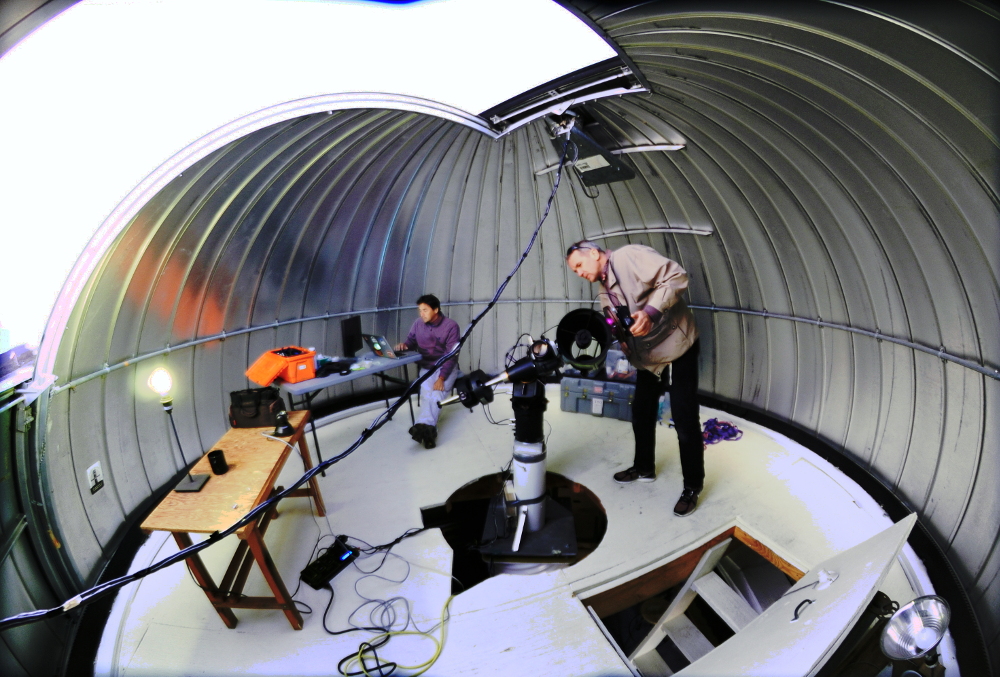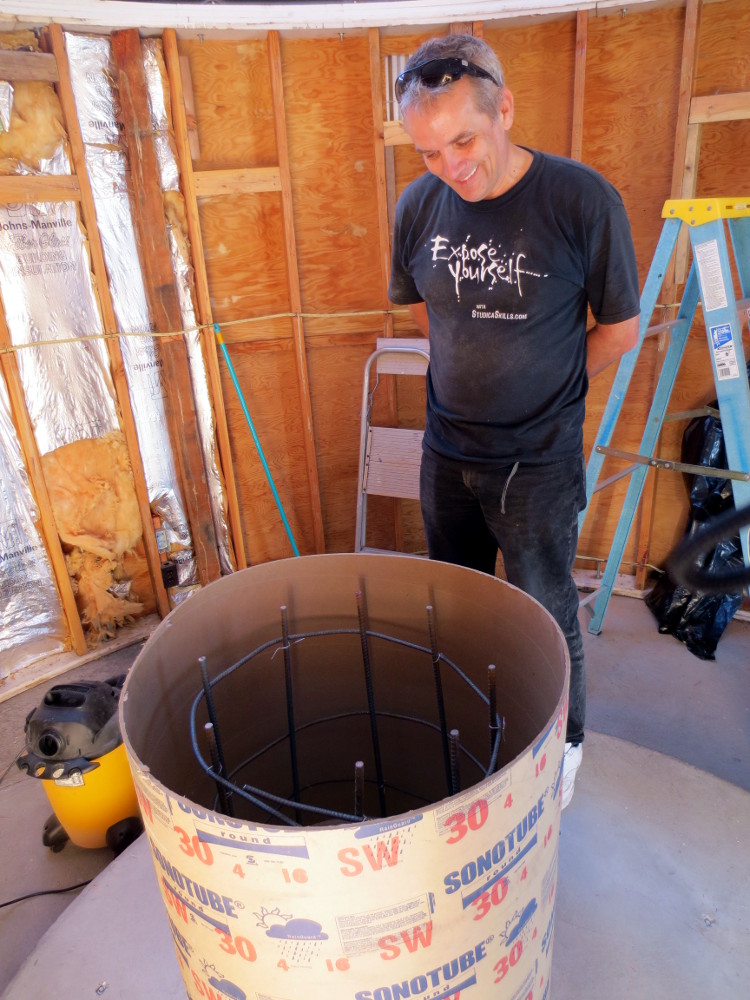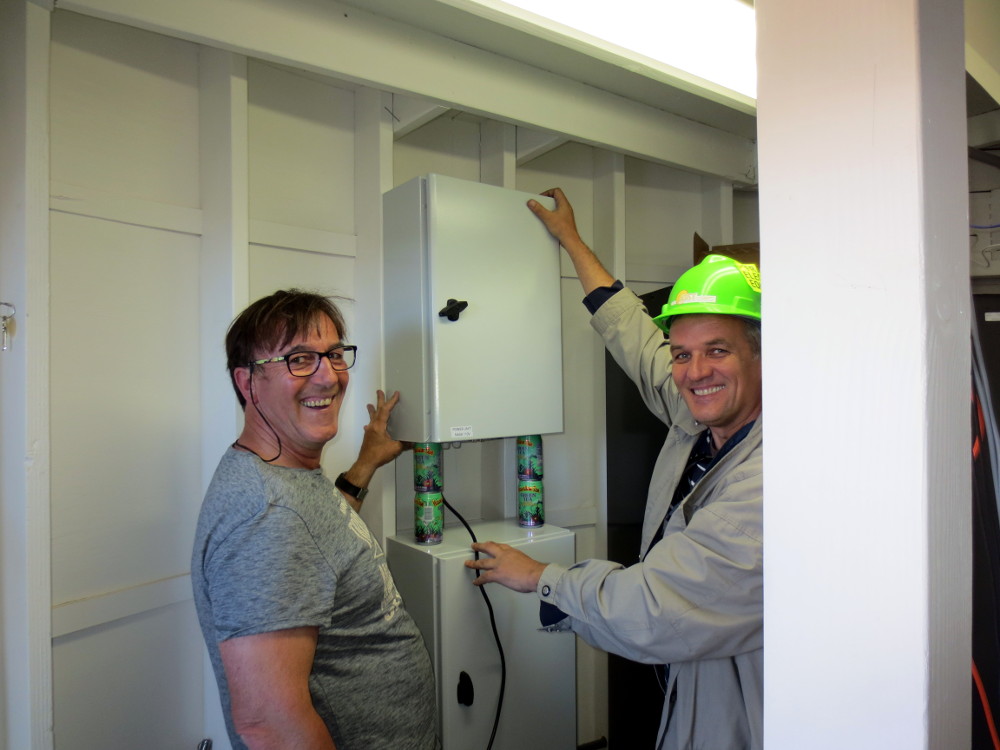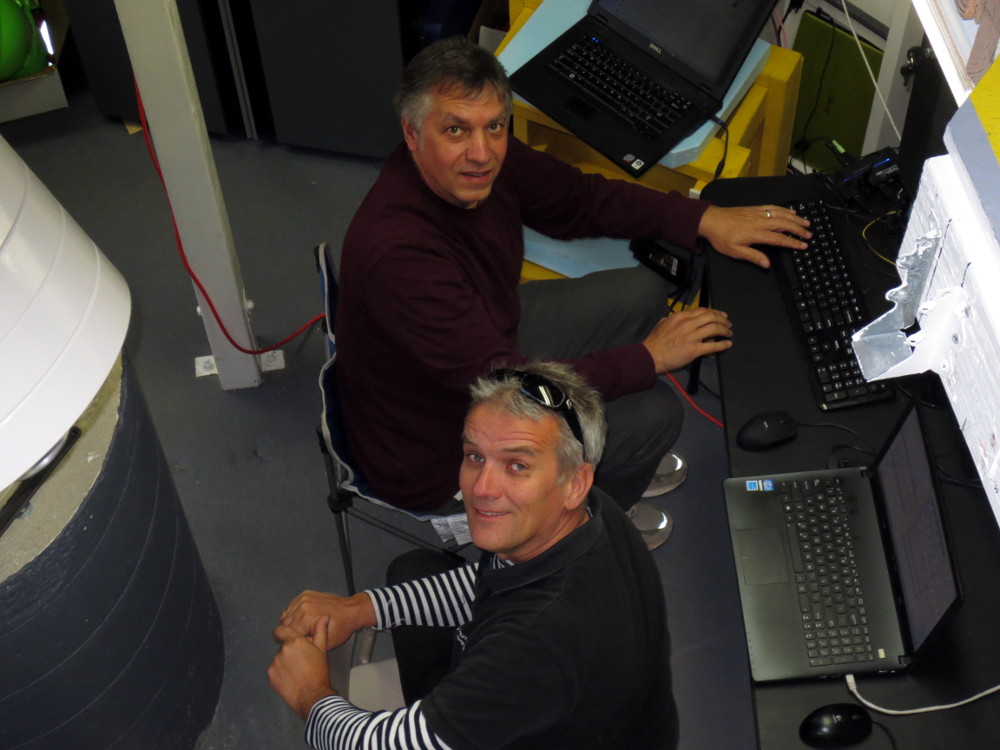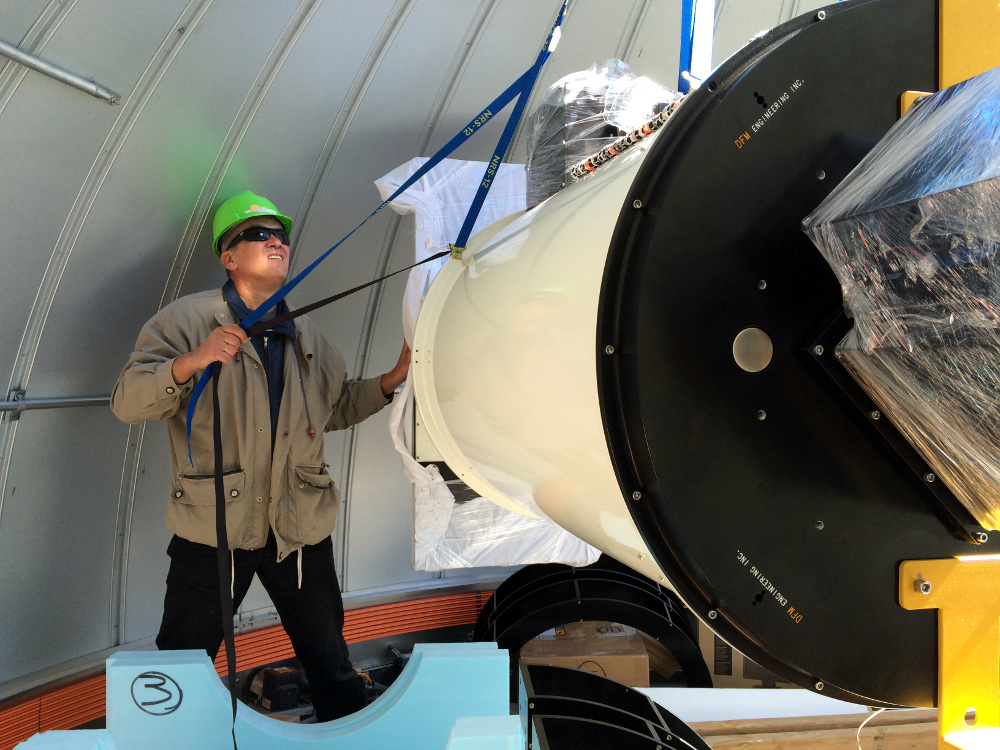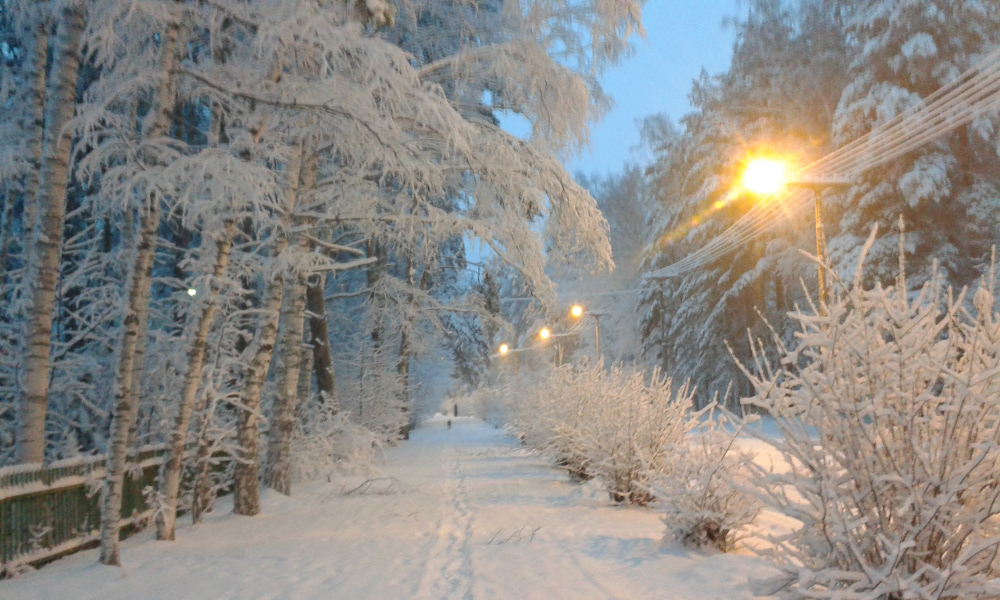It is with great sadness that we report the passing of our friend and colleague Andrei Sherstyuk at the age of 51. He died suddenly of a heart attack on August 4, 2016, at the Institute for Astronomy, where he had continued to work on the ATLAS project even through the morning of his death. We include below what his brother and wife wrote for him, and a few pictures from his creative and dedicated — though tragically short — tenure on the ATLAS team. The last picture Andrei took himself — on a morning run last Christmas Eve, near his home in Novosibirsk.
Instead of Eulogy
By Sergey and Katya Sherstyuk
Each man begins with his or her parents. Andrei was raised by his mother, Lidia Bobrova. She carried all the burden and pleasure of raising two boys. Andrei was the younger one. At the age of 13 he spent one year in Poland, where his mother got a job, which was very rare and enviable chance at that time. When they returned back to the USSR, Andrei managed to catch another opportunity – he was admitted to the prestigious physical-mathematical school affiliated with Novosibirsk State University. This school gathered talented kids from the whole Siberian and far-East region of the country. After graduation he entered Novosibirsk State University. During his years at the NSU he studied a wide variety of disciplines – beginning from algebra, functional analysis and ending economy and scientific communism; he majored in physics and computer science. Naturally, he spent a good deal of time with other activities – mountain climbing, speleology, summer work in Hungary. And there were two years in the military, after he’d been drafted, along with all other men in his year. He graduated with a diploma on “Automation of physical experiment” and got a position at the local research institute.
Andrei met Katya in 1988 at an extra curriculum English language club when they were both juniors at Novosibirsk State University. They fell instantly in love with each other and got married several months later, just before graduation. In 1990 Katya was admitted and started as a PhD student at Caltech, and Andrei joined her soon after. These student years after they met were like a dream for them – so much love, friends around, amazing adventures and hard, hard work.
When Andrei joined Katya at Caltech, he said: “I did enough studying in my life. I want to work.” He was lucky to join an AT&T research team which was collaborating with a Caltech professor Fred Thompson on a project incorporating natural languages with computers and over the internet. This was essentially the same idea as the “world wide web” that was invented and changed the world just a couple of years later.
When Andrei received his first salary in the US, he bought Katya a dozen roses with stems so long that they were almost Katya’s height. Katya was studying for the qualifying exams with her classmates in their graduate student housing unit. When Andrei brought in the flowers, everyone was stunned… Andrei was like that throughout his life – an amazing romantic who gave his wife roses on every occasion.
Working at a research team on the Caltech campus, submerged into a unique intellectual atmosphere, Andrei soon changed his mind about studying. He entered a Master’s program in computer sciences and took a computer graphics class with Jim Blinn, a pioneer in computer animation and scientific visualization. This class changed everything; computer graphics instantly became Andrei’s passion.
In 1994, Andrei and Katya got their degrees from Caltech and moved to Melbourne, Australia, where Andrei continued his study in computer graphics as a PhD student in Monash University. Again, the Melbourne years were fantastic – Katya’s first job at Melbourne Uni, Andrei’s PhD work producing techniques and images that appeared on cover pages of computer graphics journals, and lots of friends, hiking, camping, driving along the coast up north from Melbourne, almost to the Great Barrier Reef, seeing Australia’s stunning beauty.
When Andrei finished his PhD in 1999, he got a job with an R&D team of Square USA, which was working on a very ambitious “Final Fantasy” animation movie that used tons of computer graphics. The studio was in Honolulu. Now it was Katya’s turn to follow her husband, which she gladly did several months later. These were joyful times – an ambitious project at work, a young and energetic group of colleagues from all over the world who instantly became friends, endless beach and hiking on the weekends… And Andrei and Katya started the family. Their son Ilya was born on Christmas day in 2000.
Andrei was an amazing father. He loved his and other people’s children so much and spent so much time with them. When baby Ilya started to talk, he would call his mom: “Daddy, daddy… I mean, mommy…” Dad was everything for him. When Andrei’s and Katya’s daughter Ksenia was born in 2004, another love story started. Looking through Andrei’s pictures, it is almost impossible to find a portrait of his own: he is always with the kids, giving them a warm hug, soothing them to sleep, or building a gingerbread house together.
After Square USA, Andrei worked on several high-tech projects, affiliated with the University of Hawaii. He worked at the Telehealth Research Institute at UH medical school on projects that would use virtual reality to treat war veterans from psychological traumas, and to help train doctors. Lately he worked for the Institute for Astronomy as part of the ATLAS project. Andrei would only take jobs that are creative and pushing the frontier. He loved research and loved creating new knowledge. There were no compromises and he gave himself fully to the projects he was working on.
In addition to his main job, Andrei kept thinking about new research ideas in computer graphics, collaborating with people all over the world. Andrei joked that writing research papers for him was like a hobby. He loved going to scientific conferences, and was a reliable referee for many journals and conferences in computer graphics.
Life was intense and very fast-paced and sometimes Katya would feel down. Andrei provided huge emotional support. One day he wrote, for Katya and himself, a list of “Good Things in Life.” He put it on the wall where they both could see it every day. Here it is:
GOOD THINGS IN LIFE:
1. We are alive.
2. We are in good health.
3. Our children have a wonderful future, full of amazing discoveries.
4. You and I are the basis of happiness for our children and for each other.
5. Almost everything that seems bad in life is not worth even a fraction of time that we spend on it.
6. The more we focus on good things, the better things become.
7. The more we share our feelings and thoughts with each other, the better life is.
8. We have to listen to the children and to each other carefully at least once a day.
This is the man Andrei was – a unique professional, and an amazing father, husband, and friend.
